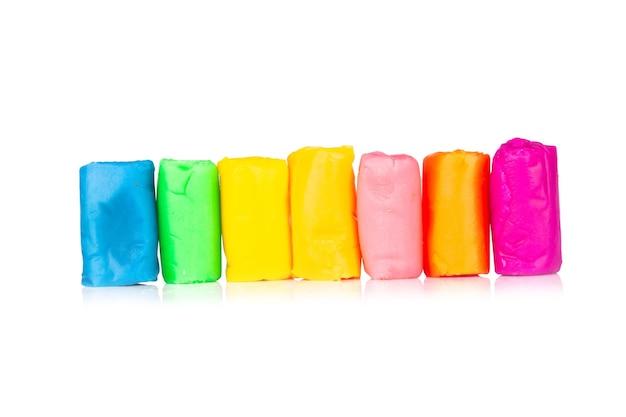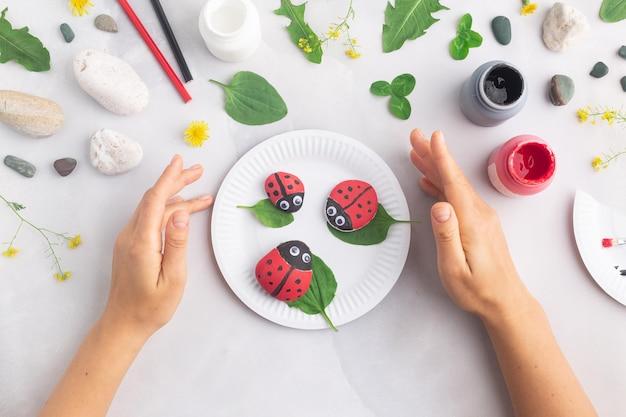Air dry clay is a versatile and popular crafting material that allows you to create unique and intricate sculptures, jewelry, and home decor items. But when it comes to adhering air dry clay to plastic surfaces, many crafters often face a common challenge. How do you ensure that the clay sticks securely to plastic without any issues?
In this blog post, we will explore various techniques and tips to help you stick air dry clay to plastic effortlessly. From using adhesives and sealants to exploring alternative methods, we’ll cover all the essential information you need to know. So, whether you’re a beginner or an experienced crafter, keep reading to discover how to achieve a strong bond between air dry clay and plastic surfaces.
How to Make Air Dry Clay and Plastic Stick Together
So, you’ve decided to venture into the wonderful world of air dry clay, but you’re facing a common dilemma – how on earth do you make it stick to plastic? Fear not, dear reader, for I am here to unravel the mysteries of this artistic conundrum. In this guide, we’ll dive into the depths of creativity and discover the secrets to successfully sticking air dry clay to plastic.
Choose the Right Clay and Plastic Pairing
First things first, let’s ensure we have the perfect match of clay and plastic. Air dry clay, as the name suggests, relies on exposure to air to dry and harden. Plastic, on the other hand, is a smooth and non-porous material. To create a bond between these seemingly incompatible materials, it’s crucial to choose the right type of clay and plastic.
Prep Your Plastic
Just like preparing a canvas for a masterpiece, your plastic surface needs a little TLC before the clay can adhere to it. Start by cleaning the plastic with mild soap and water, ensuring there are no traces of dirt, grease, or oil. Once it’s squeaky clean, roughen up the surface a bit by lightly sanding it with fine-grit sandpaper. This will provide some texture for the clay to grip onto.
Add a Little Moisture
Now, it’s time to get a bit moist – but not too much, or things will get messy! Before applying the air dry clay, slightly dampen the plastic surface using a damp cloth or sponge. This tiny bit of moisture will help create a stronger bond between the clay and plastic. Remember, a little goes a long way, so don’t go overboard with the waterworks.
Apply Clay in Thin Layers
Here comes the fun part – working with the air dry clay itself. To ensure a strong bond between the clay and plastic, it’s best to apply the clay in thin layers. This allows for better adhesion and reduces the risk of cracking or peeling. Roll out your clay to an even thickness and carefully press it onto the plastic surface, smoothing it out with your fingers or a small roller. Don’t forget to overlap the edges slightly for added security.
Get Creative with Texture
Now that your clay is adhering beautifully, why not take things up a notch and get creative with texture? Use various tools such as toothpicks, rubber stamps, or even the tip of a pencil to create interesting patterns and designs on the surface of the clay. This not only adds visual appeal but also helps enhance the bond between the clay and plastic.
Let It Dry and Cure
Once you’ve finished crafting your clay masterpiece, it’s time to let it dry and cure. Place your project in a well-ventilated area away from direct sunlight, as too much heat can cause the clay to crack. Patience is key here, as the drying time will depend on the thickness of the clay and the surrounding humidity. Allow ample time for the clay to fully dry and cure before handling or displaying your creation.
Seal the Deal
To ensure the longevity of your clay creation and protect it from potential damage or moisture, consider applying a clear sealant or varnish. This will not only provide an extra layer of protection but also add a beautiful finish to your piece. Be sure to select a sealant that is compatible with both the clay and plastic materials for the best results.
So, How Do You Stick Air Dry Clay to Plastic
In summary, sticking air dry clay to plastic is all about choosing the right materials, prepping the surface, using moisture to create a bond, applying thin layers, getting creative with texture, letting it dry and cure, and sealing the deal. With these tips and tricks in your artistic arsenal, you’ll be creating stunning clay-plastic hybrids in no time. So get out there, embrace your inner sculptor, and let your imagination run wild!
FAQ: How Do You Stick Air Dry Clay To Plastic
Air dry clay is a popular crafting material that offers endless creative possibilities. Whether you’re a seasoned sculptor or a beginner, you may face the challenge of sticking air dry clay to plastic. In this FAQ-style guide, we’ll answer your burning questions and provide you with helpful tips to ensure a successful bond between the two. So, let’s dive in and clarify some common queries!
Can You Put Mod Podge Over Air Dry Clay
Absolutely! Mod Podge is a versatile adhesive that works wonders when applied over air dry clay. It not only adheres the clay to plastic but also protects and seals the surface, preventing any mishaps. Simply brush a thin layer of Mod Podge over your air dry clay creation, and watch it transform into a masterpiece before your eyes.
What Does Vinegar Do to Clay
Ah, vinegar, the secret potion of crafters. When mixed with air dry clay, it becomes a fantastic remedy to fix cracks and imperfections. By applying a vinegar-soaked cloth or brush to your clay creation, you can easily smooth out any blemishes and enhance its overall appearance. Just remember to go easy on the vinegar—there’s no need to pickle your masterpiece!
Can You Put Air Dry Clay in the Oven
Hold your horses, partner! Air dry clay is designed to dry naturally, so it’s a big no-no to toss it in the oven. The heat from the oven can cause the clay to crack, warp, or even catch fire (yikes!). So, exercise patience and let your creation air dry at room temperature. Trust me, good things come to those who wait!
Can Air Dry Clay Break Easily
Oh, it’s a delicate world for air dry clay. While it may not rival the fragility of a fabergé egg, it’s still susceptible to breakage if mishandled or dropped from unfortunate heights. Treat your clay creations like the fragile unicorns they are, and they’ll reward you with eternal adoration. Handle with care, my friend!
Does Clay Stick to Plastic Wrap
Ah, the eternal question of whether clay and plastic wrap are destined to become best friends. Spoiler alert: they’re not! Air dry clay, like a stubborn toddler, refuses to form a lasting bond with plastic wrap. It will simply slip and slide, leaving you frustrated and possibly covered in clay residue. Spare yourself the hassle and opt for more clay-friendly adhesive methods.
What Does Clay Not Stick To
Well, it seems our dear clay is a bit picky when it comes to making friends. It doesn’t stick well to materials like plastic wrap, glass, or wood. These surfaces simply don’t provide the necessary texture or porousness for the clay to adhere properly. Instead, focus on clay-compatible surfaces like fabric, cardboard, or other clay pieces for seamless stickiness.
Can You Seal Air Dry Clay with Glue
Absolutely! When it comes to sealing air dry clay, glue is your trusty sidekick. A thin layer of glue, such as PVA or white school glue, acts as a sealant and provides extra durability and protection to your clay creation. It’s like giving your masterpiece a spa day—for clay!
What Do You Put Under Clay
Ahh, the foundation of a successful clay creation! To prevent your clay masterpiece from sticking to surfaces or leaving unwanted imprints, place it on a non-stick mat, parchment paper, or a silicone baking mat. These magical barriers allow easy removal and protect your working area from potential clay mishaps. It’s a win-win situation!
Can You Put Air Dry Clay in a Plastic Bag
Hey, no bagging this idea—it’s totally possible! Placing your air dry clay in a plastic bag helps prevent premature drying and keeps it moist and malleable for longer periods. Just make sure to squeeze out any excess air, seal it up tight, and store it in a cool, dry place. Your clay will thank you for the extended playtime!
How Do You Glue Clay to Plastic
Ah, the glue that binds us! To adhere air dry clay to plastic, reach for a strong adhesive like E6000 or a craft glue with a strong bond. Apply a small amount to both the clay and the plastic surface, give it a moment to get tacky, and gently press the two together. Voila! A sturdy connection is formed, and your creative vision can come to life!
Can You Paint Air Dry Clay Before It Dries
Absolutely! Painting your air dry clay really sets the stage for its grand debut. Grab your acrylic paints, brushes, and unleash your inner Picasso. Just make sure the clay is dry to the touch before applying your artistic strokes. Once your masterpiece is perfectly painted and dry, it’ll be worthy of a spot in the Louvre—well, maybe your living room gallery.
Can You Attach Wet Clay to Dry Clay
Oh, the compatibility of clay dynamics! While it’s more challenging to stick wet clay to dry clay compared to wet-to-wet applications, it’s not an impossible feat. To achieve a successful bond, score the dry clay’s surface using a tool or toothpick, moisten the scored area with water, and gently attach the wet clay. With a little patience and finesse, you’ll build a clay connection that’ll stand the test of time.
Does Clay Stick to Aluminum Foil
You bet it does! Aluminum foil, the unsung hero of clay enthusiasts, provides a stellar surface for clay to adhere to. Its smooth texture and pliability make it an ideal partner in clay-sticking endeavors. So go ahead and mold your clay onto aluminum foil, and let the magic unfold!
Can You Seal Air Dry Clay with PVA
Absolutely! PVA glue, also known as white school glue, is an excellent choice for sealing air dry clay. Apply a thin layer of PVA over your dry clay creation, allow it to dry completely, and witness the transformation. This sealant not only adds protection but also primes your clay surface for paint and other finishes. It’s like giving a VIP treatment to your clay masterpiece!
What Glue Works on Air Dry Clay
Ah, the glue-guru question! When it comes to bonding air dry clay, a variety of glues can work wonders. Opt for strong adhesives like E6000, epoxy glue, or a strong craft glue suited for porous materials. These glues offer superior bonding strength and ensure that your clay creation stays intact for years to come. No glue-stick situations here!
Can You Waterproof Air Dry Clay
Absolutely! If you want to give your air dry clay creation the power to withstand water adventures, you can waterproof it with a clear outdoor sealer or varnish. These magical potions act as a shield, ensuring your clay stays safe and dry even amidst rain showers or accidental spills. Now your clay can be a true Aquaman or Aquawoman!
And there you have it, folks—a comprehensive FAQ-style guide to answer all your burning questions about sticking air dry clay to plastic. Armed with this knowledge, you’re ready to take on your next clay creation with confidence. So grab your clay, get crafty, and let your imagination run wild because the world of air dry clay awaits your artistic touch!

